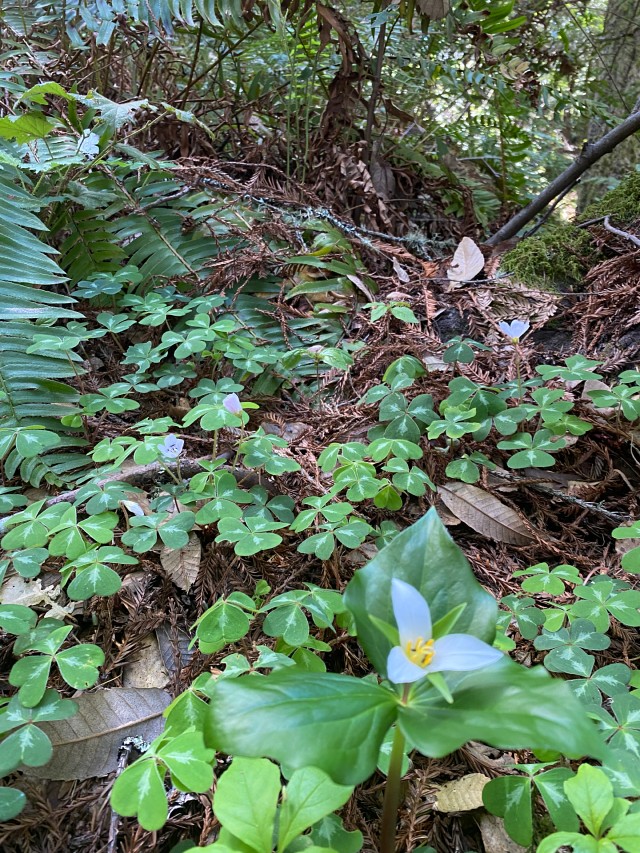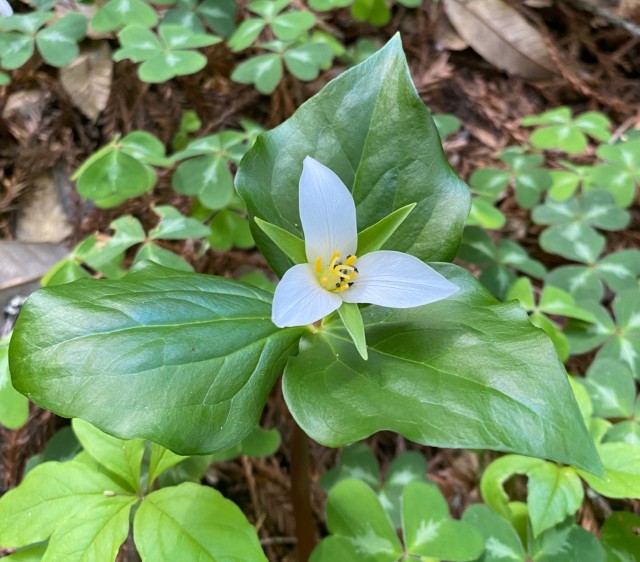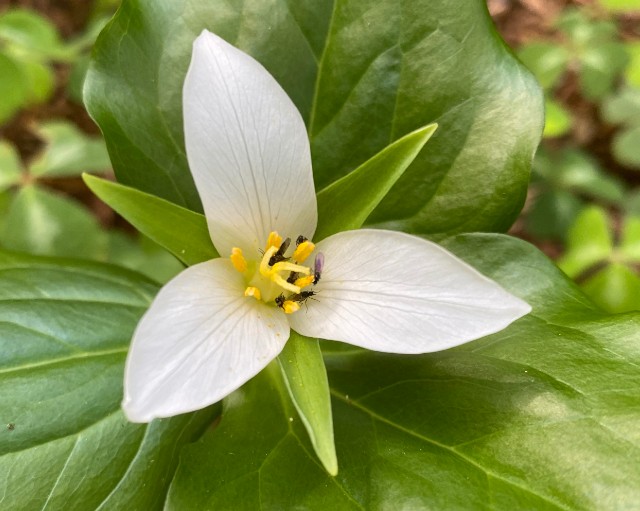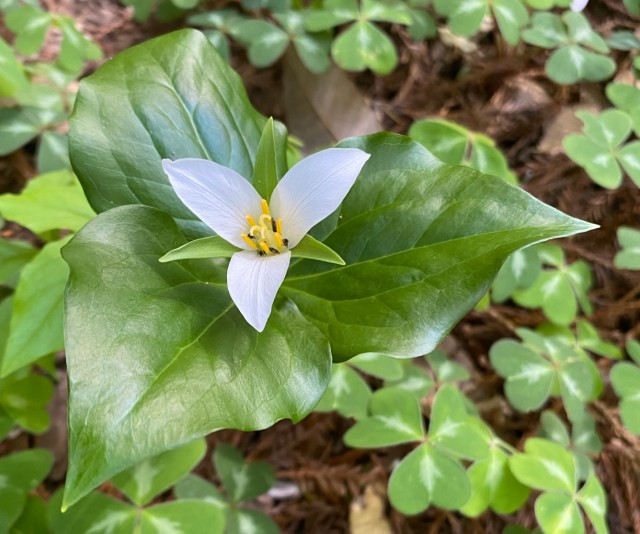While hiking in the Santa Cruz Mountains, I came across this unmistakable and endearing plant that softly lights up the vernal understory of moist coniferous and mixed forests in California and some of its surrounding states. This plant is also known as Pacific Trillium, Coast Trillium, and Pacific Wake-robin. The “wake-robin” name refers to the plants early spring blooming season.
This wildflower is easy to identify due to what looks like three showy white petals held just above three large triangular leaves. A perennial that grows from rhizomes, it technically produces no true leaves or stems above ground; the stems are considered an extension of the horizontal rhizome. The part of the plant that we notice most is an upright flowering stalk and the leaf-like structures are bracts, but most people call them leaves, because they photosynthesize.
This is one of many types of flowers that rely on ants for the distribution of their seeds. The ants collect trillium seeds and bring them back to their nests. Trillium have a calorie-laden appendage on each seed called a strophiole. Ants eat the strophioles and discard the seeds, thus dispersing them to different parts of the woods. Ants have been observed to carry trillium seeds as far as thirty feet from the plant where they collected it from.
Western White Trillium’s flowers bloom starting in late February in the southern part of its range and in March or April elsewhere. Citizen science observations of flowering plants of this species peak during the first week of April. Since White Trillium is Ohio’s State Wildflower, it was neat to see the West Coast species of this plant.




